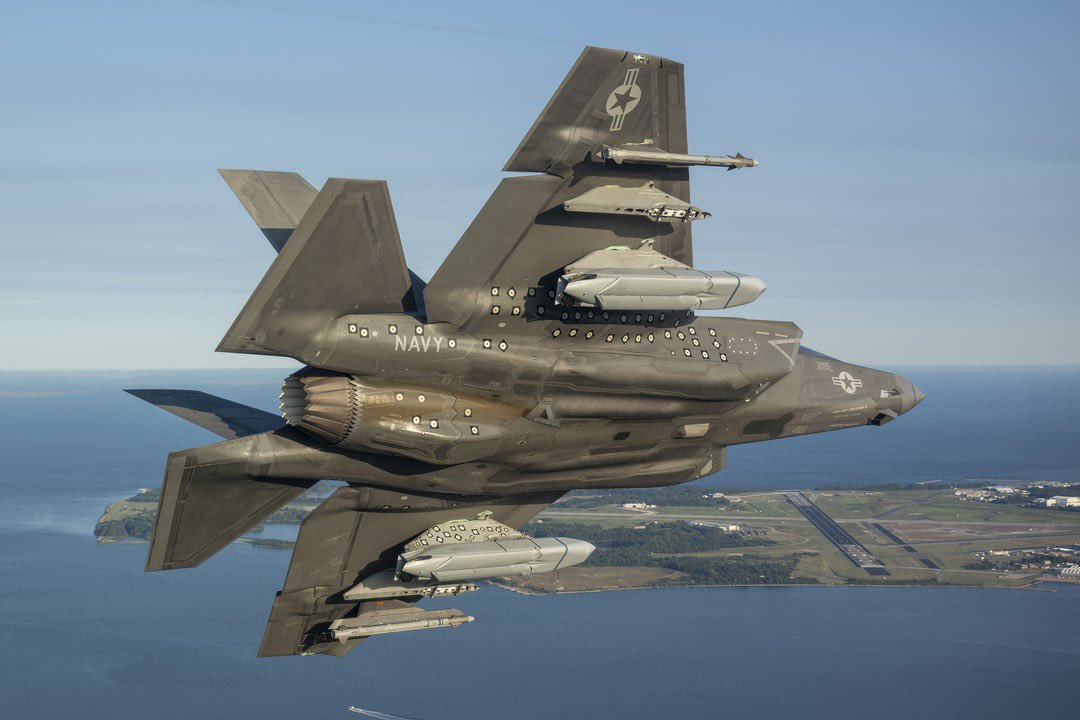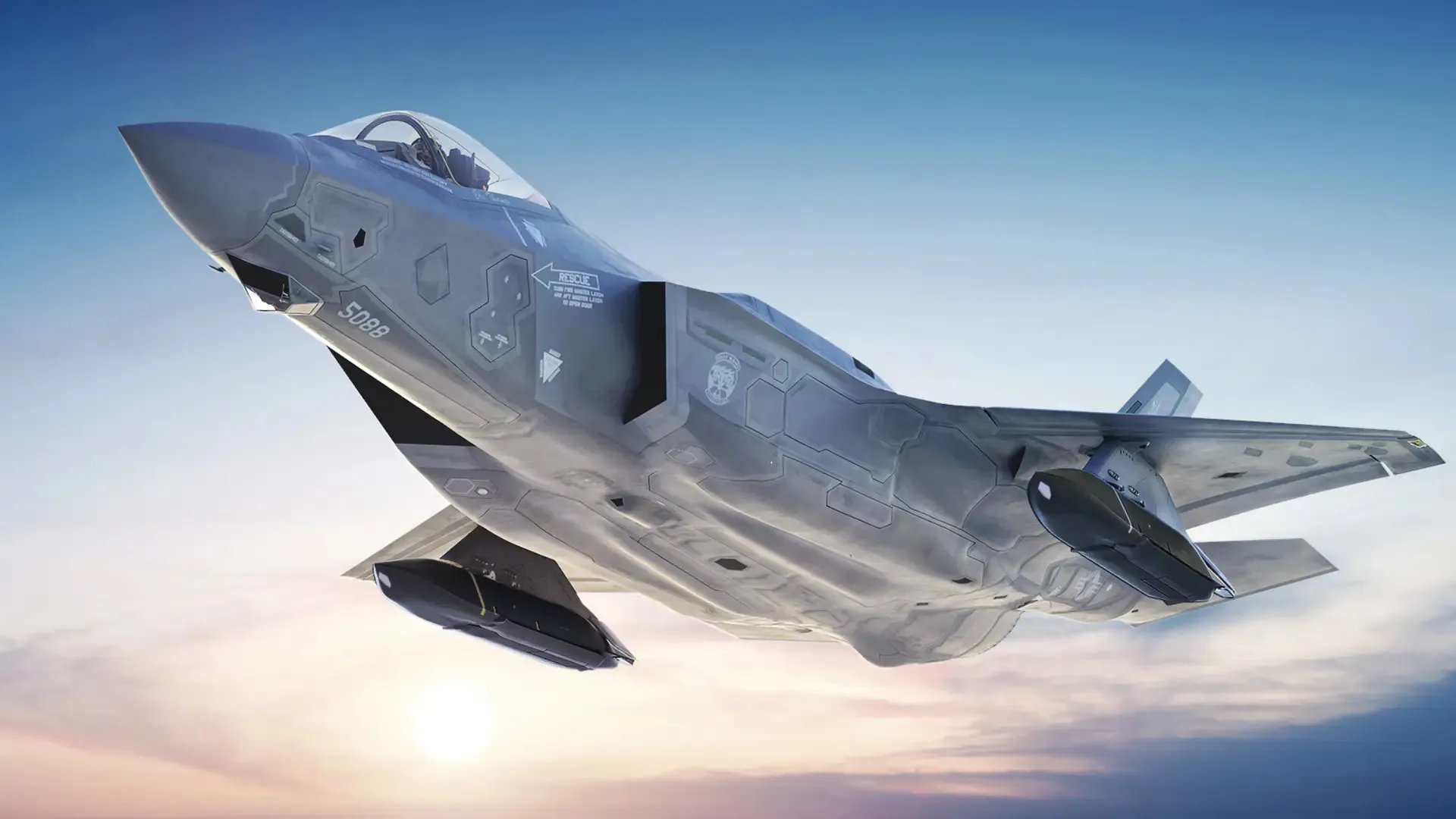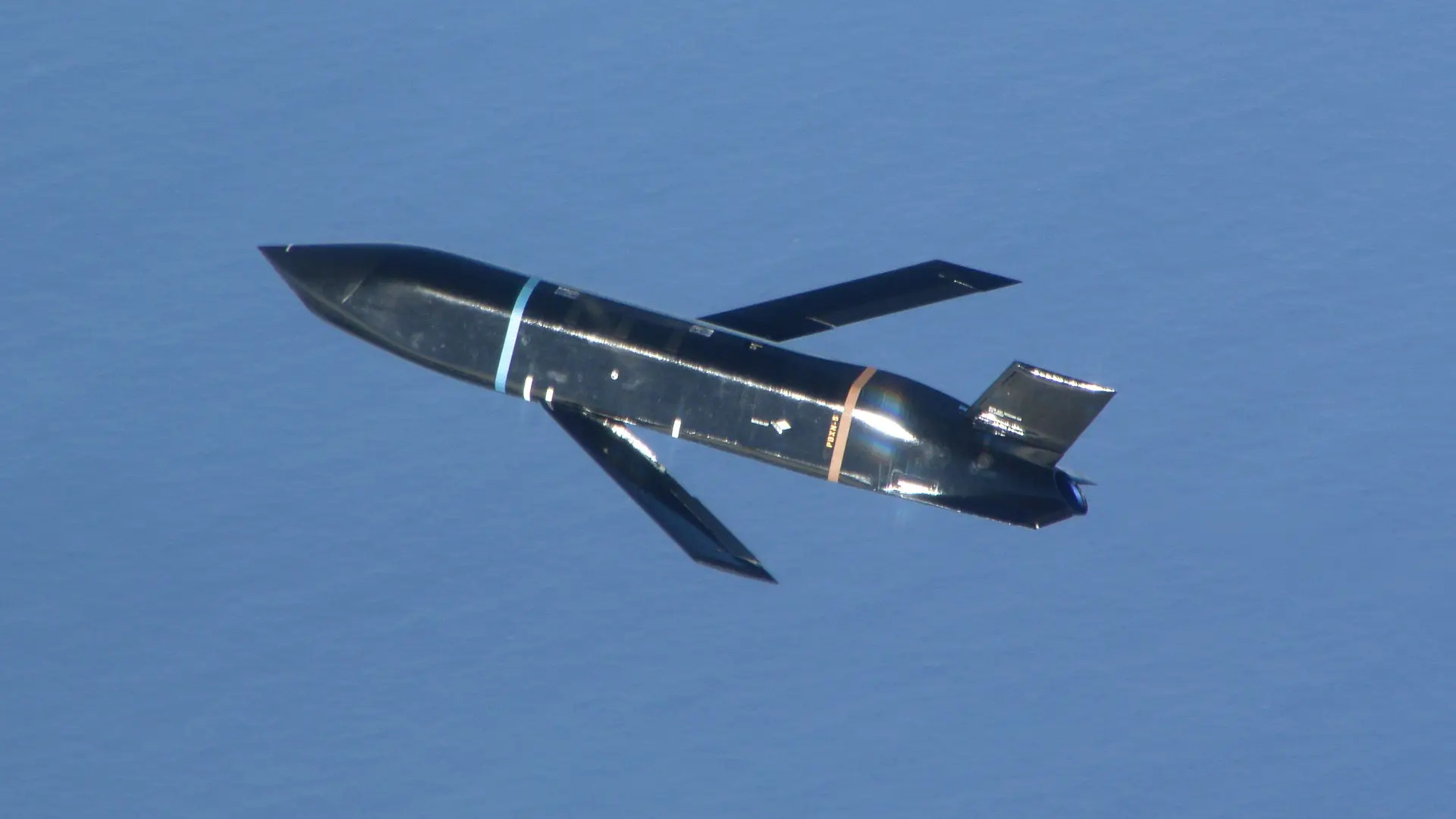Work is now underway to integrate the low-observable AGM-158C Long-Range Anti-Ship Missile (LRASM) on the F-35.

The Pentagon has, for the first time, released a photo showing an F-35 stealth fighter carrying an AGM-158C Long-Range Anti-Ship Missile (LRASM). The stealthy standoff weapon, which is a derivative of the AGM-158 Joint Air-to-Surface Standoff Missile (JASSM), will provide the F-35 with a powerful anti-surface warfare capability, something that will be especially important for a potential future high-end conflict in the Pacific against China.

The photo was published today by the U.S. Department of Defense and shows a test flight out of NAS Patuxent River, Maryland, on September 10. A pair of LRASMs are seen on the inboard underwing pylons of a carrier-capable F-35C variant, assigned to the Pax River F-35 Integrated Test Force.

“As part of ongoing integration efforts, the Pax River F-35 Integrated Test Force (Pax ITF) team flew two days of test flights to evaluate flutter, loads, and flying qualities with two AGM-158 loaded on external stations,” the accompanying caption reads. “LRASM is a defined near-term solution for the Offensive Anti-Surface Warfare (OASuW) air-launch capability gap that will provide flexible, long-range, advanced, anti-surface capability against high-threat maritime targets.”
The description of the stores as AGM-158s doesn’t rule out the possibility of versions of the baseline JASSM, but either way they are test articles, with the LRASM having the same mold line as the JASSM.

As well as the F-35C, LRASM will be integrated onto the short takeoff and vertical landing F-35B variant. LRASM — like JASSM — cannot be carried internally by any F-35 variant. Externally carriage has an adverse effect on the aircraft’s stealth, but this is considered a reasonable price to pay for the weapons long-range precision attack capabilities and its own low-observable characteristics that make it highly survivable.
As we have described in the past, LRASM uses a GPS-assisted inertial navigation system (INS) guidance system and careful route planning to bring it to the vicinity of the target area. On its way there, the weapon uses its highly adaptive routing capability, which allows it to automatically change course in response to ‘pop-up’ air defense threats. Those threats, in turn, are detected using LRASM’s built-in electronic support measures (ESM) package. Other threat updates are provided from external sources, via a datalink, which can allow for LRASMs to work cooperatively for coordinated strikes.
Once the missile arrives in the target area, it activates an imaging infrared (IIR) seeker for the terminal phase of flight. The seeker searches for targets and autonomously classifies them using pre-programmed parameters that are stored in its threat target library database. The advanced seeker also ensures that the missile strikes the ship at its most vulnerable point. Since the seeker is passive, it can’t be detected by hostile ships, and it cannot be countered using radio-frequency jamming.
Previously, there were plans for LRASM to also have the ability to strike targets ashore, but the Navy announced earlier this year that it had abandoned plans for this subvariant, as you can read about here.
However, there are further improvements to LRASM in the pipeline.
The AGM-158C-3 version — which once would have had land-attack capability — will include new software, enhanced beyond-line-of-sight data link, and improved survivability. Importantly, it will also have a range in line with that of the AGM-158B JASSM-ER — reportedly in the region of 600 miles.
This compares with a range of between 200 and 300 miles for the baseline JASSM and LRASM, based on publicly available information.
Until LRASM is cleared for carriage by the F-35, the Navy’s F/A-18E/F Super Hornets are currently the service’s only aircraft capable of employing variants of the missile. Integration efforts are also addressing other Navy platforms, including P-8A Poseidon maritime patrol aircraft.

The Air Force’s B-1B bombers can also launch LRASMs.
LRASM is a big deal for the F-35, which currently lacks any dedicated anti-ship missile — at least until the full integration of the Norwegian-designed Joint Strike Missile (JSM), which can be carried internally, but is a multi-role land attack missile with anti-ship capabilities.
While LRASM will provide the F-35B/C with a significant capability, it will ultimately serve as part of a mix of advanced anti-ship weapons, including hypersonic ones.
Noteworthy is the fact that the AGM-158C-3 was originally developed under the OASuW Inc 2 program, which has since evolved into the Hypersonic Air-Launched Offensive Anti-Surface Warfare missile, or HALO.

As of earlier this year, it was planned for HALO to attain initial operational capability in Fiscal Year 2029. Although it will first be integrated onto the F/A-18E/F, it will likely subsequently be added to the F-35.
The current efforts to integrate the baseline LRASM on the F-35 reflect a Pentagon-wide focus on the acquisition of new and improved anti-ship capabilities. With eyes on future contingencies in the Indo-Pacific region, we are currently seeing considerable interest in the development and fielding of a host of new ground-based surface-to-surface missile systems with anti-ship capabilities, as well as air-launched weapons like LRASM.





